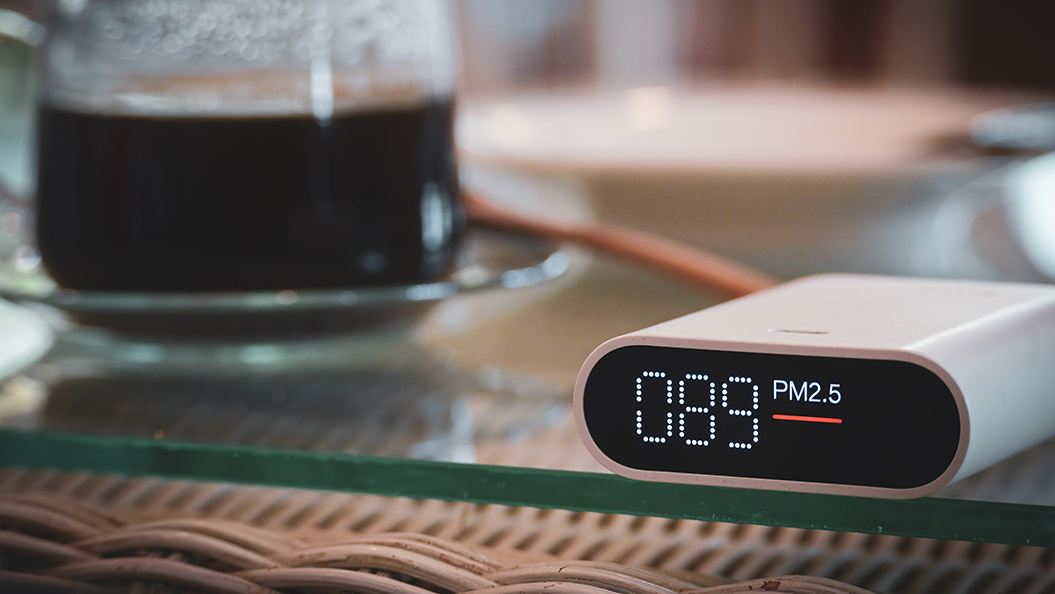Air quality testing is recommended when a homeowner notices signs of poor ventilation, such as musty odors or areas where mold collects on surfaces. Before purchasing a property that may have subsurface chemical contamination, such as a former gas station or landfill site, it is also recommended.
Professional assessments involve observations, data collection, sampling, and analysis. Self-testing kits do exist, but they need to provide the full picture.
Particle Counters
Particle counters monitor the presence of airborne particles that are too small to see with the naked eye. Light scattering technology can indicate particle concentrations and size in a controlled environment like a cleanroom.
These instruments use a light-blocking optical technique based on the Tyndall effect, which scatters light off particles in a colloid system. The instrument’s photodetector will convert the scattered light into an electrical signal and report a size distribution based on how much light the particle blocks versus how much it scatters.
Aerosol particle counters are vital equipment many users take for granted. They look at the instrument and think that absolute results will tumble out once the correct button is pressed. It’s essential to understand the underlying technological principles that these devices are based on, so they can be used and interpreted correctly. This will help avoid false alarms and interpretation errors.
Monitors
Air quality testing Salem Oregon, monitors and detect specific types of pollutants that can impact human health. They typically come with a display that gives current readings or uses a color-coded system to indicate danger levels. They can also communicate with smartphones and smart home hubs like Apple Home kit or Alexa to control devices such as air purifiers and dehumidifiers.
Some monitors are designed to track multiple pollutants simultaneously, such as carbon dioxide and radon. In contrast, others focus on particular hazards, such as odorless gases, such as carbon monoxide, produced by automobile exhaust or PM2.5 particles that originate in smoke from forest fires or burning fossil fuels. Some monitors can even detect ozone, which is created in nature and can trigger headaches and respiratory symptoms.
In addition to detecting these harmful gasses, some monitors can also measure humidity and temperature, which can be helpful if a family member has asthma or another health condition affected by these conditions. Some models can communicate with a smartphone app that provides more detailed information and allows users to track trends over time.
Sampling Methods
Air sampling draws a known volume of ambient air into a sample container for subsequent analysis. This technique evaluates gases and particulates in landfills and construction sites, such as ozone (O3), volatile metals, sulfur compounds, and mercury (in their volatile form). It can also test for semi-volatile organic chemicals such as formaldehyde, glutaraldehyde, acetaldehyde, crotonaldehyde, and tolu aldehyde.
To minimize interference, a pre-sampling inspection of the building should be conducted to identify conditions that might affect the accuracy of the results, such as physical conditions, building ventilation systems, and occupant use patterns. An inventory of products that could be volatile chemical contaminants should also be completed. In many cases, building ventilation should be operating during testing to provide samples representative of typical exposure in a mechanically ventilated setting. If ventilation is impossible, testing only at specific locations may be necessary to understand local contamination sources and exposure impacts.
Analysis
Many of the same devices used to detect particles in the air can also be used to measure gases like carbon dioxide, carbon monoxide, and volatile organic compounds (VOCs). Some monitors even have a display panel that shares real-time values on the device. And if they’re smart home enabled, they can also be linked to your thermostats for automatic reporting.
Many odorless gases like radon and carbon monoxide are dangerous in high concentrations. And since they don’t have an unmistakable odor, it’s essential to have a sensor to detect them.
Those same sensors can also measure for allergens like mold spores and other biological pollutants. And then, some can detect and identify harmful chemicals such as formaldehyde – a known carcinogen at certain levels of long-term exposure. Labs use a sophisticated gas chromatograph to analyze the samples for the most accurate results. These instruments require professional training and use and are best handled by experts.
